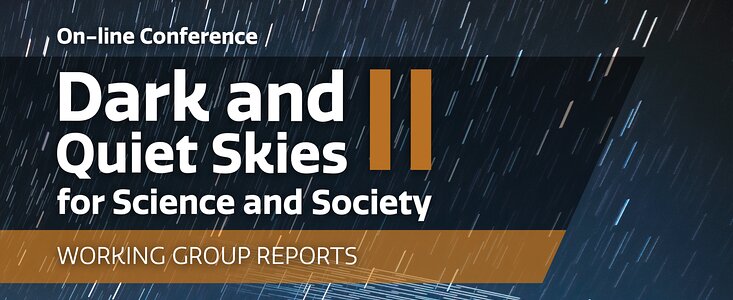- News
- Science
- Scientific Bodies
- Divisions
- Commissions
- Commission A1 Structure
- Commission A2 Structure
- Commission A3 Structure
- Commission A4 Structure
- Commission B1 Structure
- Commission B2 Structure
- Commission B3 Structure
- Commission B4 Structure
- Commission B5 Structure
- Commission B6 Structure
- Commission B7 Structure
- Commission C1 Structure
- Commission C2 Structure
- Commission C3 Structure
- Commission C4 Structure
- Commission D1 Structure
- Commission E1 Structure
- Commission E2 Structure
- Commission E3 Structure
- Commission E4 Structure
- Commission F1 Structure
- Commission F2 Structure
- Commission F3 Structure
- Commission F4 Structure
- Commission G1 Structure
- Commission G2 Structure
- Commission G3 Structure
- Commission G4 Structure
- Commission G5 Structure
- Commission H1 Structure
- Commission H2 Structure
- Commission H3 Structure
- Commission H4 Structure
- Commission J1 Structure
- Commission J2 Structure
- Commission J3 Structure
- Commission X1 Structure
- Commission X2 Structure
- Past Commission Organising Committees
- Working Groups
- Centres
- Scientific Meetings
- Rules & Guidelines
- General Assemblies
- Meeting Proposals
- Future IAU Meetings
- General Assemblies
- EC Meetings
- Officers' Meetings
- Regional Meetings
- Symposia
- Focus Meetings
- Institutional Meetings
- IAU Offices Meetings
- IAU-Sponsored Meetings
- Letters of Intent submitted for 2024
- Letters of Intent submitted for 2023
- Letters of Intent submitted for 2022
- Letters of Intent submitted for 2021
- Letters of Intent submitted for 2020
- Past IAU Meetings
- Templates
- Other Meetings
- Grants & Prizes
- Scientific Bodies
- Publications
- IAU Publications
- IAU Strategic Plan
- Symposia
- WGSBN Bulletins
- Regional Meetings
- Information Bulletins/Catalyst
- E-Newsletters
- Focus Meetings
- Transactions A
- Transactions B
- Related Publications
- GA Newspapers
- CAPjournal
- IAU Books
- Brochures
- IAU Offices
- WG Reports
- Commission Reports
- Division Reports
- Past IAU Publications
- Rules, Guidelines and Instructions for Proceedings
- Publishers
- IAU Publications
- Administration
- About the IAU
- Statutes & Rules
- IAU Policies
- IAU Executive Bodies
- IAU Secretariat
- Resolutions
- Members Administration
- Administrative Dates & Deadlines
- International Organisations Relations
- Donate to the IAU
- Training in Astronomy
- Astronomy for Education
- Astronomy for Development
- Astronomy for the Public
- Office for Astronomy Outreach
- FAQ
- Themes
- Satellite Constellations
- Astronomy in Everyday Life
- How to Report a Discovery
- Careers in Astronomy
- Defining our Place in the Cosmos
- The Constellations
- Light Pollution
- Measuring the Universe
- Near Earth Objects
- How to Participate in Astronomy Research
- Naming of Astronomical Objects
- Naming of Exoplanets
- Buying Star Names
- Naming Stars
- Pluto and the Solar System
- IAU Member Statistics
- Our Moon: the Moon
- Meteors & Meteorites: The IAU Definitions of Meteor Terms
- UNESCO-IAU Portal to the Heritage of Astronomy
- Social Media
- Past Events
- Call for Online Resources
- Astronomy@Home Awards
- Contact
ann22002 — Announcement

12 January 2022
Dark and Quiet Skies II for Science and Society Working Group Reports Published
Reports discuss the feasibility of implementing adequate measures to mitigate the impact of artificial interferences
In October 2021 more than 700 people from 76 countries took part in the United Nations/Spain/International Astronomical Union Conference on Dark and Quiet Skies for Science and Society online, following the online workshop on the same theme held in October 2020. At this second meeting delegates focused on the feasibility of implementing the specific measures to mitigate the impact of artificial interferences affecting the visibility of the sky and the detection of cosmic radio signals recommended in the first conference. The results of this meeting are contained in the reports, which are now available online. The main findings of the conference will also be presented to the 59th Session of the Scientific and Technical Sub Committee (STSC) of the UN Committee for the Peaceful Use of Outer Space (COPUOS) in the form of a Working Paper in February 2022.
The Dark and Quiet Skies II conference and its reports focused on the three categories of artificial interferences that negatively impact astronomical observations:
- The urban illumination or artificial light at night;
- The optical trails of satellites in low Earth orbits;
- The radio transmission by ground and space emitters that affects radio astronomy.
The conference was co-organized by the United Nations Office for Outer Space Affairs (UNOOSA), International Astronomical Union (IAU), and the Government of Spain, with support from NSF’s NOIRLab. This second conference saw a more explicit involvement of the industrial stakeholders and of space policy experts, whose contributions were instrumental in presenting a credible review of the proposed mitigating measures as well as of possible regulatory guidelines.
The advantages to society that the communication satellite constellations are offering cannot be disputed, but their impact on the pristine appearance of the night sky and on astronomy must be considered with great attention as they affect both the cultural heritage of humanity and the progress of science.
More information
The IAU is the international astronomical organisation that brings together more than 12 000 active professional astronomers from more than 100 countries worldwide. Its mission is to promote and safeguard astronomy in all its aspects, including research, communication, education and development, through international cooperation. The IAU also serves as the internationally recognised authority for assigning designations to celestial bodies and the surface features on them. Founded in 1919, the IAU is the world's largest professional body for astronomers.
Links
Contacts
Connie Walker
Cell: +1-520-331-2448
Email: connie.walker@noirlab.edu
Lars Lindberg Christensen
IAU Director of Communications
Cell: +1 520 461 0433/+49 173 38 72 621
Email: lars.christensen@noirlab.edu
Amanda Kocz
NSF’s NOIRLab Communications
Email: amanda.kocz@noirlab.edu
About the Announcement
Id:
ann22002
ann22002
